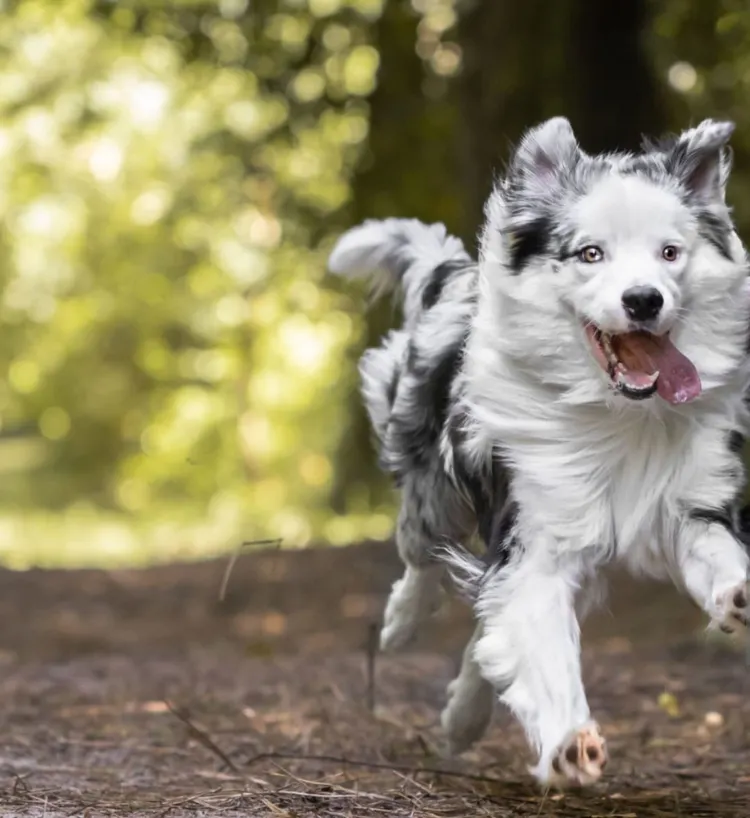Ever caught your dog gently sucking on a blanket or favorite toy? It might seem like an odd but harmless quirk, perhaps even a bit endearing. While this behavior is relatively common, it can leave pet owners wondering what’s going on in their dog’s mind. Is it simply a soothing habit, or could there be deeper issues at play? Whether the behavior is connected to comfort-seeking, separation anxiety, or early weaning, it’s important to understand why dogs engage in sucking behaviors and when to be concerned. In this guide, we’ll explore both the psychological and physiological causes behind dog sucking, how to redirect the behavior in a healthy way, and provide eco-conscious tips for choosing safe alternatives for your furry friend.
Why Do Dogs Suck?
Dog sucking behavior can be triggered by several factors, ranging from psychological to physiological. Understanding these reasons can help you determine whether the behavior is harmless or if it requires intervention.
1. Comfort and Self-Soothing
Much like thumb-sucking in children, many dogs suck on blankets, toys, or even their own paws as a form of self-soothing. This can be a way for dogs to calm themselves, especially when they are in a relaxed or sleepy state.
- Why It Happens: Sucking can replicate the comforting sensation of nursing from their mother during puppyhood. For some dogs, this behavior carries into adulthood as a way to feel safe and secure, especially during quiet times or after a stressful event.
2. Separation Anxiety
For some dogs, sucking is a coping mechanism for separation anxiety. Dogs that experience anxiety when left alone may suck on objects to alleviate their stress. This behavior provides them with comfort and serves as a distraction from the fear or loneliness they feel when their owner is not around.
- Signs to Look For: If your dog only engages in sucking when you leave the house, it may be a sign of separation anxiety. Additional symptoms can include destructive behavior, excessive barking, or pacing when left alone.
3. Early Weaning
Dogs that are separated from their mothers too early (before 8 weeks of age) may develop sucking behaviors as a way to compensate for the loss of the nursing experience. Early weaning can cause puppies to miss out on critical emotional and physical bonding, which can later manifest in behaviors like sucking on blankets or toys.
- Solution: If your dog was weaned early, be patient and understanding. While the sucking behavior may persist into adulthood, providing safe alternatives and offering comfort can help minimize its occurrence.
4. Boredom or Habit
Sometimes, dogs develop habits when they lack adequate mental or physical stimulation. If a dog doesn’t have enough to do during the day, they may resort to repetitive behaviors like sucking on objects. Over time, this can become a comforting habit that your dog engages in, even when they’re not stressed or anxious.
- Prevent Boredom: Keeping your dog mentally engaged with interactive toys or regular playtime can reduce their likelihood of developing repetitive behaviors like sucking.
5. Health Issues
In some cases, sucking may indicate an underlying health issue. Dogs experiencing gastrointestinal discomfort, such as nausea or indigestion, might engage in unusual oral behaviors, including licking or sucking on objects.
- Monitor Health: If your dog suddenly starts sucking on objects more frequently, consult your vet to rule out any medical conditions such as digestive problems, allergies, or nutritional deficiencies.
Is It a Problem?
Dog sucking is often a normal and harmless behavior, but there are situations when it can become problematic. Understanding when to be concerned can help you take appropriate action to protect your pet’s well-being.

1. When It’s Normal
Occasional sucking, especially during times of rest or after an exciting event, is generally considered normal. Many dogs find comfort in this behavior, and it’s usually harmless as long as they’re not ingesting any non-food items.
- Safe Practice: If your dog has a designated blanket or toy that they enjoy sucking on, ensure that it’s made from non-toxic, durable materials that won’t break down into small pieces.
2. Signs of Distress
If the sucking becomes excessive or compulsive, it may point to underlying anxiety, stress, or unmet needs. Dogs that engage in sucking for long periods of time, especially when combined with other signs of distress (such as whining or pacing), may need intervention.
- Behavioral Concerns: Excessive sucking can be a sign of deeper emotional issues, such as anxiety, lack of stimulation, or stress. In such cases, it’s essential to address the root cause of the behavior and consult a vet or animal behaviorist for advice.
3. Health Risks
One of the biggest concerns with sucking behavior is the risk of ingesting fabric or parts of toys, which can lead to gastrointestinal blockages. If your dog tends to chew and consume objects rather than simply sucking on them, it’s important to intervene quickly.
- Watch for Signs: Symptoms of blockages can include vomiting, lethargy, and a lack of appetite. If you suspect your dog has ingested fabric or another object, seek veterinary care immediately.
Solutions for Redirecting the Behavior
If your dog’s sucking behavior becomes problematic or poses a health risk, there are several ways to redirect their attention and manage the behavior in a healthy way.

1. Interactive Play and Eco-Friendly Toys
One of the best ways to prevent excessive sucking is by providing plenty of mental and physical stimulation. Engage your dog with interactive play, puzzle toys, and regular exercise. Eco-friendly dog toys made from sustainable materials such as natural rubber, organic cotton, or hemp are great alternatives that are safe for your pet and the environment.
- Eco-Tip: Look for toys made from recycled materials or biodegradable fibers to reduce your environmental impact. Brands offering eco-friendly chew toys often ensure that their products are non-toxic and safe for both your pet and the planet.
2. Comfort Substitutes
If your dog seeks comfort by sucking on blankets or toys, provide them with specific items designed for soothing. For instance, you can offer a designated blanket or plush toy made from sustainable materials that they can use for self-soothing, ensuring it’s durable and safe.
- Sustainable Options: Opt for organic cotton or eco-friendly blankets that are free from harmful chemicals and dyes. These sustainable choices will keep your dog comfortable without harming the environment.
3. Routine and Training
Establishing a consistent daily routine can help reduce anxiety and prevent the development of sucking behaviors. Dogs thrive on structure, and knowing when to expect meals, walks, and playtime can help them feel more secure.
- Training Tip: Incorporate positive reinforcement training to help your dog develop healthy habits. Reward them when they choose appropriate objects for comfort or engage in non-sucking behaviors.
4. Natural Calming Aids
If your dog’s sucking behavior is tied to anxiety, consider using natural calming aids to help them relax. Products like pheromone diffusers or herbal supplements (such as chamomile or valerian root) can help soothe your dog without resorting to synthetic chemicals.
- Eco-Friendly Solution: Choose calming aids made from natural ingredients and packaged sustainably. These solutions can help reduce your dog’s anxiety while supporting environmentally conscious practices.
5. Consult a Vet
If your dog’s sucking becomes excessive or if you suspect it’s related to an underlying health issue, it’s important to consult a veterinarian. They can assess your dog’s overall health, rule out medical conditions, and provide guidance on managing the behavior.
Conclusion
Sucking behaviors in dogs can be a comforting habit, but it’s important to monitor how often and why your dog is engaging in this activity. While occasional sucking is usually harmless, excessive or compulsive sucking could point to anxiety, boredom, or even health issues. By providing healthy alternatives—such as eco-friendly chew toys, sustainable blankets, and natural calming aids—you can help redirect your dog’s behavior in a positive way.
Understanding the causes behind your dog’s sucking will allow you to support their well-being while also making environmentally conscious choices. Whether it’s offering safe, organic toys or creating a soothing routine, you can ensure your pet stays happy, healthy, and engaged.



